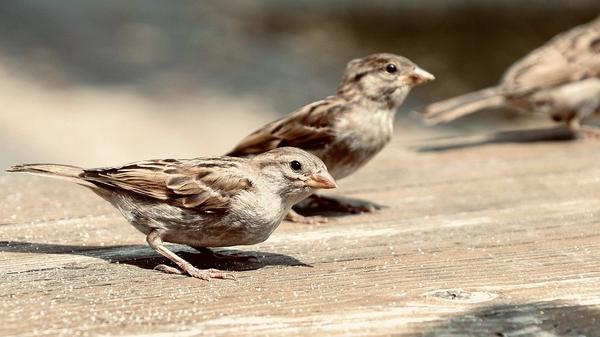Sparrows dying out due to humans?

Across the history of human civilization, people have always been charmed and fascinated with the small, yet resilient, sparrows that lived in every location.
From rural fields to small villages to big cities, sparrows have always lived everywhere, building their nests in various nooks and crannies.
Sparrows usually survive off of seeds and grains, which, for the city-dwelling sparrows, can be found aplenty at grocery stores.
They have also adapted to eat leftover human food, which can be found everywhere in city streets.
Adult sparrows also feed insects to their young children, which are also commonly found in human cities.
These sparrows came to be known as house sparrows, since they were commonly found outside of houses.
However, in recent years, the sparrow population has been rapidly declining in Indian cities.
The Bombay Natural History Society (BNHS) conducted a survey in 2013, which studied the population of house sparrows between then and 2005.
Their survey revealed that, in only seven years, house sparrows had vanished from about 50% of their previous habitat.
The Ela foundation also conducted a study which revealed that sparrow populations have seen a 50% drop in cities like Mumbai, Pune, and Nashik.
Since sparrows have always been such a common bird, no one thought that they needed conservation.
However, factors like modern architecture, excessive insecticide usage, and electromagnetic radiation from cell phone towers have caused the house sparrow population to drop sharply.
Now, people are spreading awareness about the declining house sparrow population and the need to conserve this species.
Mohammed Dilawar, a sparrow conservation activist, formed the Nature Forever Society (NFS). The NFS aims to involve citizens in the conservation movement in India.
The Limca Book of Records mentioned the NFS for their house sparrow conservation efforts and their distribution of bird feeders across 28 states.
The NFS also played a major role in making the house sparrow the state bird of Delhi in 2012.
Over 40,000 people have now joined the cause of the NFS, and Dilawar emphasizes that it is the responsibility of every citizen to conserve and protect the house sparrow population.
Image by Susanne Jutzeler, suju-foto from Pixabay (Free for commercial use)
You may also like
Image Reference: https://pixabay.com/photos/sparrows-house-sparrow-sperling-4347162/
Recent Posts
- MoRTH to unveil fresh black spot data for safer highwaysBlack spots are identified as 500-metre stretches on National Highways that witness frequent serious accidents.
- India plans policy shift to boost e-Commerce exportsUnder current policy, foreign e-commerce firms can only function as intermediary marketplaces within India.
- BCCI rewards women in blue with ₹51 crore after World Cup winA proud day for Indian cricket as the Women in Blue scripted history with their World Cup victory. To celebrate the achievement, the BCCI has announced a ₹51 crore prize for the team, coaches, and support staff.
- MoRTH to unveil fresh black spot data for safer highways
What’s new at WeRIndia.com
News from 700+ sources
-
Meet Akkai Padmashali, first transgender person from Karnataka to be part of SC-appointed panel
-
Promise To Make Roads Like Americas: Nitin Gadkaris Big Infra Push In Bihar
-
TUDA proposes 60% funding for development works to urban local bodiess
-
Agriculture Minister Atchannaidu slams YSRCP MP for politicising farmers issues
-
Mysuru industries seek CONCORs support for boosting exports
-
D.K. Shivakumar urges private firms to grant three-day leave for Bihar voters
-
WeRIndia – A News Aggregator
Visit werindia.com for all types of National | Business | World | Politics | Entertainment | Health related news and much more..









Leave a Reply